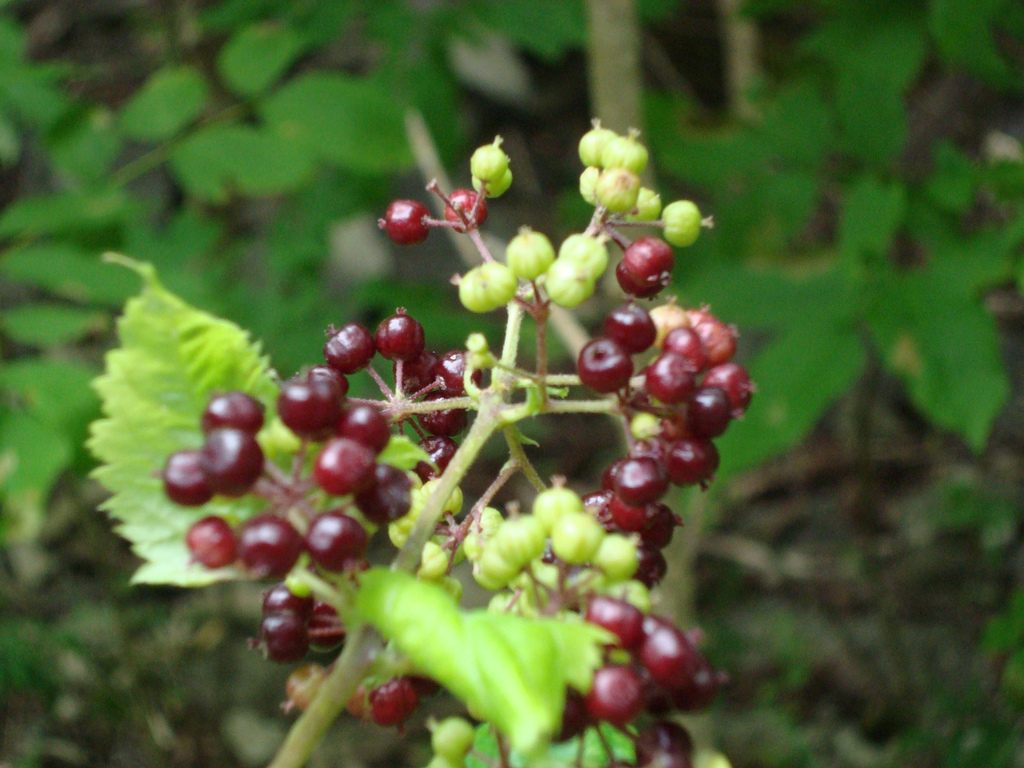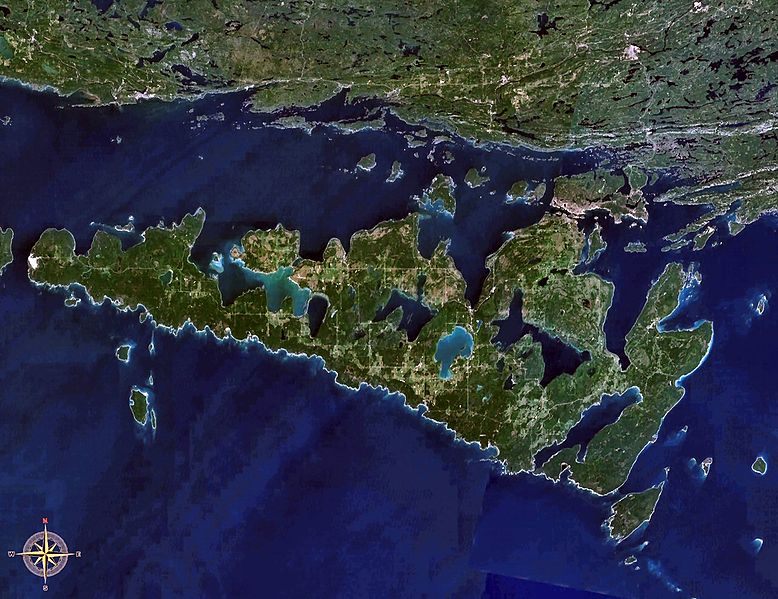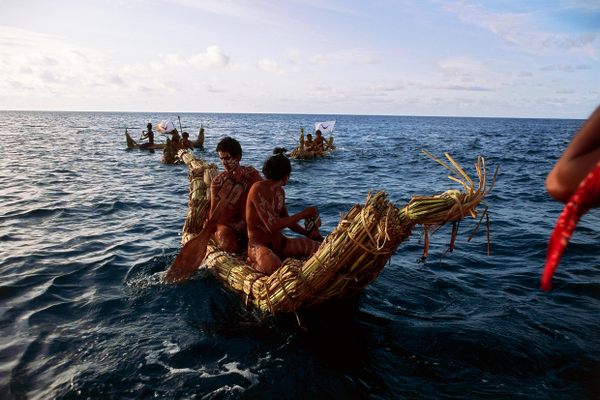This Canadian Island is Completely Obsessed With Berries
 Manitoulin Island in Lake Huron, Canada. (Photo: Nicole Bratt/flickr)
Manitoulin Island in Lake Huron, Canada. (Photo: Nicole Bratt/flickr)
“Don’t listen to her,” Susan, the owner of Queen’s Inn in Gore Bay on Manitoulin Island, Canada, told us as we sat in the bed and breakfast’s dining room eating our morning meal. “She’s just an old haweater.”
“And you’re just an honorary haweater!” the employee retorted.
The women’s banter was curious. What exactly is a haweater? Was it an insult?
Far from it. Manitoulin, the largest freshwater island in the world, is home to a community completely obsessed with hawberries, the bright red fruit of the hawthorn tree. It’s a historical thing—according to lore, early European settlers arrived around 1863 to an island abundant with hawthorn trees. A famine hit shortly after their arrival and the settlers watched their food supply quickly begin to disappear. But the hawthorns, because they grow well in dry soil, stayed strong. Settlers began to supplement their diets with the hawthorn berries, and the tiny red bundles provided relief from imminent starvation and the threat of scurvy.
 Hawthorn berries. (Photo: Mike Babcock/flickr)
Hawthorn berries. (Photo: Mike Babcock/flickr)
At some point in time, the islanders themselves began to be known as haweaters or haw-people. The hawberry has evolved from a quick fix during famine to an entire island identity.
To be an official haweater, you must have been born on the island. But you can also become an honorary haweater by moving to the island and living there for a substantial portion of your life.
The two women at Queen’s Inn may have been ribbing each other, but it speaks back to a time when, in 1952, a writer for McLean’s magazine cast a negative light on haweater as a word. Don Delaplante wrote that it was used as a sort of geographical slur against people from the southern areas of Ontario. But the people of Manitoulin Island know there’s nothing negative about it—the berries were the savior of the island in the early days, and the haweater name is a badge of honor.
Hawberries are so ingrained in the culture on Manitoulin that the island even introduced a trade coin, or community currency, based on the treat. Haweater Dollar coins were minted on the island between 1969 and 2008 and used for currency, fundraising, and souvenirs. The roughly 10,000 nickel-silver coins that were released each year became a mainstay of the island’s annual Haweater Weekend celebration, handed out during the general island reunion and festival that punctuates the summer season. Each coin came with a certificate of authenticity and could be used only at participating businesses on the island in place of regular governmental issued currency.
Haweater Dollars were the longest running series of Canadian trade dollars and have become fairly rare and collectible since production discontinued—some fetch up to $250 each on eBay.

The trade dollars depicted a different scene from island life each year of their run, from an image of the M.S. Chi-Cheemaun passenger ferry that shuttles islanders to the mainland, to a picture of a local church, to a scene of the local Batman’s Grist Mill on the island’s shores. The flip side of each coin usually carried a map of Manitoulin, a deer, a teepee, and a fisherman.
Native American legend says that Manitoulin was designed by the gods as an ideal island. According to the Ojibway, when the Great Spirit, known as Gitchi Manitou, was creating Earth, he held his favorite parts off to the side. Beside him he piled the best breezes, most abundant forests, sunniest shores, clearest and shiniest water. He formed these attributes into an island in Lake Huron, which was then taken by the breeze and pushed to the northern shore. Then the Great Spirit struck the island with a bolt of lightning and a crash of thunder marked the moment that Manitoulin Island was fixed in that space for eternity.
Today, it’s not uncommon to see an islander walking home carrying an armful of hawthorn branches, the bright red berries hanging from the ends, and the harvester’s fingers stained red from popping them off the plant for an afternoon snack. Shop owners across the island use the berries in every way they can, incorporating it as a staple ingredient in jams, jellies, ice cream, chocolate, and even beer. Artists on Manitoulin use the hawberry image as a motif in carvings, paintings, and other decorations.
Although haweater dollars are no longer in circulation, the hawberry culture on Manitoulin continues strong. Haweater Weekend continues in the summer every year, and residents continue to honor the little red fruit that made their home possible.
 A satellite view of the island. (Photo: Public Domain/WikiCommons)
A satellite view of the island. (Photo: Public Domain/WikiCommons)









Follow us on Twitter to get the latest on the world's hidden wonders.
Like us on Facebook to get the latest on the world's hidden wonders.
Follow us on Twitter Like us on Facebook